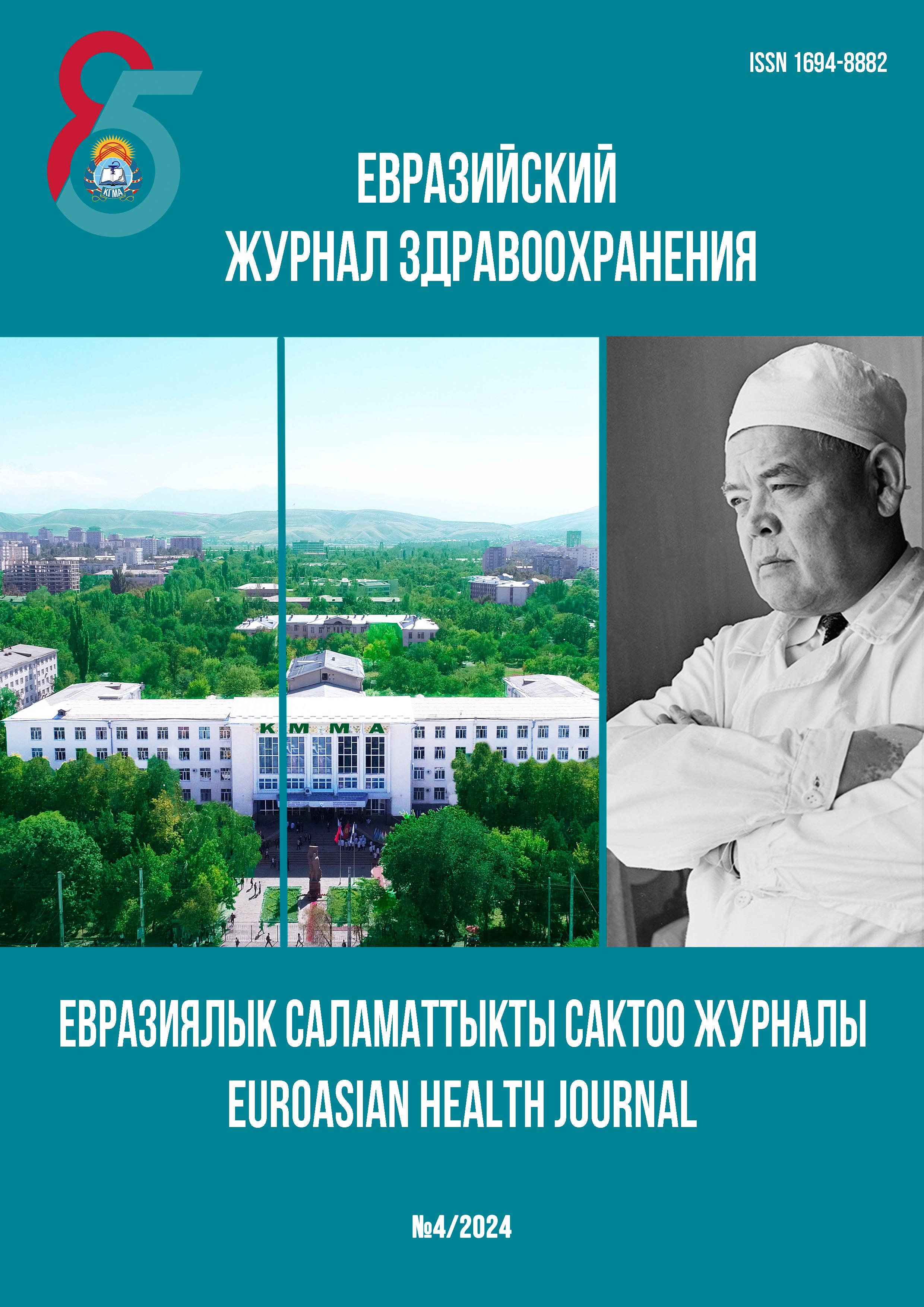USE OF EXTERNAL FIXATION FOR TREATMENT OF EXPERIMENTAL GUNSHOT FRACTURES OF LONG BONES IN HIGH MOUNTAINOUS REGIONS
DOI:
https://doi.org/10.54890/1694-8882-2024-4-146Abstract
The work is based on the analysis of experiments conducted on 32 dogs modeling firearm fractures using the Ilizarov apparatus. The experiment was carried out in 2015 in the high- mountain scientific base Too Ashuu. The relevance of the study is due to the unique physiological and environmental characteristics of high mountain regions, which significantly affect the healing process of bone tissue. The article analyzes the results of surgical interventions, assesses the degree of restoration of anatomical integrity and functional activity of the limbs, and also examines the features of adaptation to a high-altitude environment. The results demonstrate that the method of stable osteosynthesis creates optimal conditions for the recovery of damaged limbs. Ensuring close contact and immobility leads to minimal pathological reactions from the vessels, thereby preventing their re-injury. This promotes improved tissue nutrition, accelerated recovery of muscle fibers, and complete regeneration of bone tissue. The dynamics of healing are analyzed, including parameters of bone tissue regeneration, callus formation, the degree of inflammatory reactions, as well as complications that arise during the treatment process. The findings may be useful for the development and improvement of fracture treatment techniques in extreme conditions and in the context of injuries caused by firearms.
Keywords:
transosseous osteosynthesis, Ilizarov apparatus, experimental fracture, gunshot woundReferences
1. Автандилов Г.Г. Медицинская морфометрия. М.: Медицина; 1990. 382 с.
2. Искровский С.В. Клинико-биохимическое обоснование внутреннего и внешнего остеосинтеза огнестрельных переломов бедра (клинико - экспериментальное исследование). Эволюция остеосинтеза: сб. науч. трудов. СПб.; 2005:78-94.
3. Некачалов В.В. Патология костей и суставов. М.: Сотис; 2000. 285 с.
4. Шаповалов В.М. Боевые повреждения конечностей: применение современных медицинских технологий и результаты лечения раненых. Травматология и ортопедия России. 2006;2(40):307-308.
5. Токонов Т., Айтмырзаев Б.Н., Мукашев М.Ш. Структура и частота встречаемости смертельных огнестрельных ранений и взрывных травм по данным РЦСМЭ МЗ КР за 2012- 2016г.г. Вестник КГМА им И.К.Ахунбаева. 2018;1:169-172.
6. Grainz E, Gambera D, Maniscalco P, Bertone C, Rivera F, Maggiore D. Low-velosity gunshot fractures of the tibia. J Orthop Sci. 2002;7(3):386-91. https://doi.org/ 10.1007/s007760200064
7. Levy BA, Vogt KJ, Herrera DA, Cole PA. Maisonneuve fracture equivalent with proximal tibiofibular dislocation. A case report and literature review. The Journal of Bone & Joint Surgery. 2006;88(5):1111-1116. https://doi.org/10.2106/JBJS .E.00954
8. Petersen W, Zantop T, Raschke M. Tibial head fracture open reposition and osteosynthesis - arthroscopic reposition and osteosynthesis (ARIF). Die Unfallchirurgie. 2006;109(3):235-44. https://doi.org/10.1007/s00113-006-1067-8







